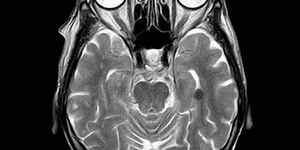What 3-D Printing Can Do for Congenital Heart Disease
How do advances in 3-D printing technologies improve the possibilities open to cardiologists treating people with congenital heart disease? Scientists from a new American College of Cardiology review discuss the benefits.
Congenital heart disease (CHD) is characterized by the issues that arise from defects in the structure of the heart with which a baby is born. These are the most common type of birth defects, occurring in nine out of every 1,000 live births. Areas affected include the walls, valves, arteries, and veins in or near the heart. Defects disrupt the normal flow of blood, and although CHD survival rates have improved over the past few decades, these defects have lifelong consequences.
Lead author Shafkat Anwar, MD, lists five “key areas” affected by CHD outcomes: the patient, the caregiver, individual clinicians, the medical team, and the healthcare system.
"3-D printing is a disruptive technology that is impacting each of these key areas in CHD,” Anwar explained. "3-D printing is rapidly evolving in medicine, with technical improvements in printers and software fueling new and exciting applications in patient care, innovation and research.”
First and foremost, 3-D printing provides a unique opportunity for treating and managing CHD by creating models of a patient’s specific anatomy. These personalized models are invaluable for surgeons and medical support staff in planning for and practicing a complicated surgical procedure. The more practice and better planning, the less time spend on the surgery and the lower the risk of surgical complications.
3-D-printed models and other materials also offer an advanced training and educating opportunity for physicians, both those just beginning their careers and those wishing to stay sharp after decades in the field. For physicians in training, 3-D printed models can reduce the amount of time it takes for physicians to effectively specialize in cardiology.
3-D printing also improves communication among physicians and specialists, who spend time making plans for surgical procedures, discussing potential outcomes and problems.
Lastly, 3-D printing is helpful for actual the patients and caregivers affected by CHD in understanding their condition and the associated health risks.
Although high cost of using and implementing this technology is a serious roadblock, 3-D printing products of the (hopefully) near future include tissue-mimicking materials for increasingly lifelike models and even printing living tissue.
The present study was published in the journal JACC: Basic to Translational Science.









